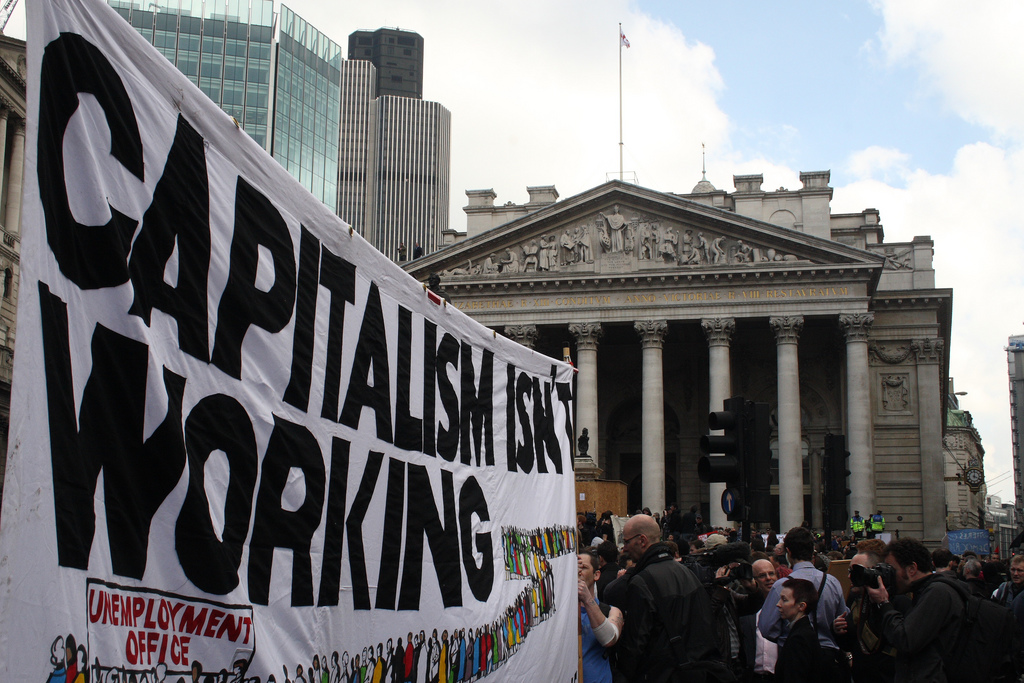by B.W. Sculos
Edinburg, TX
Rio Grande Valley United Faculty, TFA, NEA member (personal capacity)
Higher credit card and mortgage interest rates, rising cost of food and many other necessities at grocery stores, soaring energy prices, shortages of life-sustaining medications. These are the daily economic experiences of people across the United States and around the world. However recent many of the worst aspects of these developments have been, for working-class people the chaotic harms of the global capitalist economy are nothing new. In the US, we continue to struggle with far-too-low wages, astronomical health care costs, nonexistent affordable housing, and ever-increasing household and student debt ($16.9 trillion and $1.76 trillion respectively).
Despite the ruling class’s complaints about supply-chain disruptions, difficulties finding and keeping qualified workers, and rising costs of raw materials, corporate profits are soaring.
Companies tell us they have no choice but to raise prices to account for increased costs and general unpredictability across the economy, but these excuses ring hollow as many of the largest companies see their wealth continue to grow.
If inflation were truly primarily caused by the rising cost of raw materials and other inputs like transportation and rents, corporate profits would be flat (or, heaven forbid, dip slightly) while consumer prices rose. Even mainstream economists admit this—and yet, for some reason, they are unable to connect the dots. These “experts” are uninterested in explanations that accurately place the blame on the system—and class—whose success is defined by the exploitation of the many.
Although inflation slowed in recent months, it is still at a near all-time high in the US (and it is much higher globally). The relative unemployment rate remains low by historical standards but millions remain underemployed or have to work multiple jobs to come close to making ends meet. A majority of Americans still live paycheck to paycheck.
Despite slightly rising wages, worker pay has lagged behind skyrocketing costs of everyday goods. All the while, liberal and conservative politicians refuse to take any political action to help the poor, relying entirely on the Federal Reserve to tinker with interest rates to “cool” the economy. Rising interest rates makes it harder for regular people to borrow money to make ends meet, and it can even lead to job losses as corporations look for ways to grow their profits in the tighter economic environment.
Many economists predict that the US and global economy are on the verge of a recession. And although a “recession” has a technical definition of two consecutive quarters of declining gross domestic product (GDP), even slowing GDP growth can lead to nasty consequences for working-class people. Wage-increases will slow or stop entirely. Benefits, for those lucky enough to have them, will be on the chopping block more than usual. Job losses could be significant.
It was widely predicted that the global economy was careening toward a recession just before the COVID-19 pandemic struck. The recession that did occur was pinned on an “entirely unpredictable” virus (which epidemiologists predicted years ago). The prior economic trends were largely ignored.
Countries, including the US, passed inadequate but nonetheless unprecedented policies that somewhat mitigated a bad situation. Rent-freezes, eviction moratoriums, larger and fully refundable child tax credits, increased food stamps and unemployment payouts, and direct cash payments to millions of working-class people kept food on the table and the lights on for millions of people; they also kept the majority of the capitalist economy functioning, which continued to primarily benefit the rich.
That’s also to say nothing for the nearly entirely unregulated and widely abused bailouts given to businesses supposedly to keep paychecks flowing to their workers. Investigations into the abuse of these PPP loans in the US are unlikely to recoup much. Money continues to flow upward in the economy, as more and more of the pandemic-era safeguards are disappearing.
Struggling, but Fighting Back
Workers aren’t taking these repeated assaults lying down. Most recently, railroad workers were on the verge of a nationwide strike demanding safer working conditions, higher pay, and actual sick time. The bipartisan effort led by Joe Biden, coupled to a lesser extent with the poor planning of union leadership, resulted in rail workers being force-fed a contract that failed to seriously address their demands. It is no surprise that dangerous workplace accidents continue to threaten communities around the country, most recently the derailment in East Palestine, Ohio.
This bipartisan move against the rail workers gave the hugely profitable railroad corporations a free pass to chronically under-staff and ignore safety protocols and regulations. Forcing the contract onto railroad workers and suppressing their right to strike was one of the most aggressively anti-worker and anti-union acts since President Reagan broke the strike of PATCO air traffic controllers in the 1980s.
That said, there are reasons to be hopeful. Worker struggles in the past have had significant effects. In 2019, while Trump was President, Sara Nelson led the flight attendants’ union to spearhead a call for a general strike that forced Congress to pass a budget in just days and avert a government shutdown that would have furloughed nearly a million workers. More recently we’ve seen labor victories by graduate students in California and teachers in Massachusetts. Starbucks workers around the country, shop by shop, have won small victories, despite the millions spent by Starbucks to undermine their cause.
All the while, US politicians ceaselessly dump money into the American military and the corporations it underwrites. The multiple multi-billion dollar “aid packages” (mostly weapons) to Ukraine are just one example of Washington’s distorted priorities. Congress debates which already-underfunded social programs to cut. Meanwhile, there’s always more than enough money for corporate welfare and to buy more bombs. Solving veteran homelessness and suicide barely register as worthy expenditures. The economic basis of widespread social alienation experienced by youth most especially, though not exclusively, draws more lip service than investment in structural solutions—no matter how many mass shootings, suicides, and overdoses there are.
Democrats are rearranging the deck chairs on the Titanic and hoarding lifeboats for themselves and their corporate donors, while Republicans look to find more icebergs to crash us into. Working-class people need strong, independent, democratic unions, political organizations, and a party that represents their interests. However necessary these developments are, they are not going to happen automatically or overnight. But by building on the courageous efforts of workers in action, socialists and the working class can battle against austerity and attacks against unions.
We must fight against a profit-focused economy that is making our planet more dangerous and uninhabitable. We need federal, state, and municipal jobs programs for public housing and other infrastructure and services. Rent and price controls, student debt cancellation, and pay raises for all workers, especially education and health care workers are long overdue (see childcare on page 12 and education pages 4-5). The two corporate parties that brought us here offer nothing but false promises and deteriorating futures. The working class must build its own political alternative now, because that is how a practical and humane path—a socialist path— can be won.
Image Credit: Jonny White via Flickr // (CC BY 2.0)

